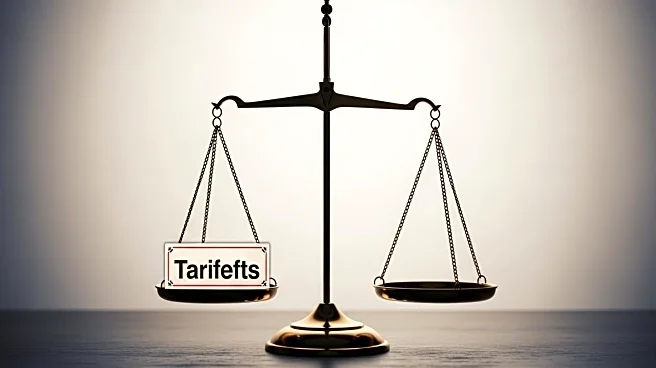What's Happening?
The Federal Reserve has reduced its benchmark interest rate by a quarter point, marking the first rate cut of the year. This decision, described by Fed Chairman Jerome Powell as a 'risk management cut,' aims to provide some economic relief and potentially stimulate growth. The move comes amid concerns over weak job growth and rising unemployment. The Fed has also indicated the possibility of two more rate cuts by the end of the year, with additional cuts planned for 2026 and 2027. This decision aligns with global economic trends, as other central banks, like the Bank of England, maintain steady rates.
Why It's Important?
The rate cut by the Federal Reserve is significant as it reflects ongoing concerns about the U.S. economy's health, particularly in the context of a K-shaped recovery where economic benefits are unevenly distributed. Lower interest rates can reduce borrowing costs for households and businesses, potentially boosting spending and investment. However, the impact on the broader economy remains uncertain, especially given the uneven recovery. The decision could influence financial markets, consumer confidence, and economic growth projections. Stakeholders such as businesses and investors may benefit from lower borrowing costs, while savers could face reduced returns.
What's Next?
The Federal Reserve's future actions will be closely monitored, with two more rate cuts anticipated by the end of the year. Economic stakeholders, including businesses and policymakers, will likely assess the impact of these cuts on economic growth and inflation. The Fed's approach to managing economic risks will be crucial in shaping future monetary policy. Additionally, global economic conditions and trade dynamics may influence the Fed's decisions in the coming years.
Beyond the Headlines
The Fed's decision highlights broader economic challenges, including income inequality and the uneven distribution of economic gains. The K-shaped recovery underscores the need for targeted economic policies that address disparities and support vulnerable populations. The rate cut also raises questions about the long-term sustainability of low interest rates and their impact on financial stability.










